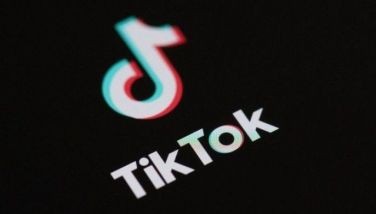Implementing e-learning – a dream?
March 7, 2003 | 12:00am
"Dreams without implementation are fairly easy to come by, especially in the software industry," according to Microsoft’s Will Poole. So many of us dream of the perfect IT set-up in our organizations, and thus, are certain this dream will be realized. However, it is not as easy as it will not run without proper fuel.
In e-learning, the product equates to the dream car – and proper implementation process fuels it to succeed. In short, the success of e-learning is 10 percent attributed to the tangible aspects, and 90 percent to the process and support.
There are three phases to a successful e-learning implementation, whether in a school set -up or in a company: Pre-implementation, implementation, and post-implementation.
At the top of your list should be to choose vendor(s)/supplier(s) that are easy to work with. It is very important that they listen to your ideas and suggest rather than impose theirs on you. Since e-learning is a new industry, there are neither norms nor standard practices that you can base your candidates on. The best way to choose a reputable vendor is to ask their clients about their work. These clients will almost always give dependable answers.
Decide how big a project you want e-learning to be, including the length of the agreement, after which, you choose your participants and courses. Always remember to have the required infrastructure.
The pre-implementation criteria must be satisfied before moving to the implementation phase.
(Note: The abstract portion would be more difficult to handle than the concrete parts.)
A. Abstract
Chance is probably the number one fear in any organization. Together with the chosen vendors, create a positive paradigm shift among the management, staff and learners. In addition, encourage the management to have guidelines of either rewarding e-learners for a "job well done" or punishing them for lagging behind – "carrot vs stick." Some companies choose to do both to ensure discipline and, at the same time, provide incentive.
B. Concrete
Discuss implementation details with the vendor/supplier, including, but not limited to, scoring system, laboratory/classroom use, integration/facilitation approach, success criteria, marketing activities and PR, among others.
Acquaint users and teachers/trainers with the organization’s objectives and expectations. As well, train both groups in navigation and features of the course, and basic course trouble-shooting.
An evaluation procedure for both the objective reports and subjective surveys by the vendor will be helpful in determining e-learning’s success in the organization. But most of all, the vendor must be on hand for support, support and more support.
Of course, not all e-learning implementations are smooth and perfect. There will always be a few bumps along the way. These bumps though will have solutions. What you need is to stay away from the pitfalls.
• No support from vendor/supplier
Like mentioned earlier, the success of e-learning is 10 percent dependent on the product and 90 percent on the process and support. The lack of or poor implementation process, and not having support from the vendor/supplier are two surefire ingredients for e-learning to fail.
• Implementing pure 100 percent e-learning
E-learning should never be used alone, especially in schools. Without the right integration approach, the e-learning program will not be utilized.
• No required infrastructure
Although e-learning is versatile in working with any infrastructure, it works optimally with the proper technical specification. In the long run, you will realize that the performance of the learners is strongly dependent on having the proper, required infrastructure.
• Lack of management/teachers’ commitment
Policies and guidelines have to be set to ensure maximization of the e-learning program, whether in a corporate or school set-up – "carrot vs stick."
• No "Help Desk"
This is actually not so big a deterrent on the success of e-learning. However, it would be helpful to have the first level of support within the organization to minimize frustration among the learners. The second level of support would be the vendor/supplier.
• Importance of e-learning undermined
Learners must realize that e-learning is training and studying; it is just using a different medium of delivery – via the computer. The organization, together with the vendor, must create "gimmicks" to ensure that the importance of e-learning is never undermined at any time.
It takes more than just dreams to make e-learning work. Similar to fuel being injected into your dream car, so too should the implementation process be constantly infused into e-learning. It is not a one-time thing but an ongoing process. At the end of the day, it all boils down to having the perfect fuel formula of commitment, dedicated people (suppliers and staff alike), and the right process to create that magical spark and keep the e-learning engine running. Without an ongoing proper implementation process – just like your dream car without fuel – e-learning will not take off. Implementing e-learning is neither "chicken feed" nor "mission impossible." You just need the right people with the proper support and process to make it an easy and smooth task.
Arlene K. Yap is CEO of Yapster e-Learning Inc. (www.2StudyIT.com). Information presented in this article is collected from Yapster e-Learning’s years of experience in implementing e-learning in several educational institutions and business establishments. Each organization has a unique requirement and process that we all continue to learn from and improve on…STI (a network of over a hundred schools), Technological Institute of the Philippines (two TIP campuses), Philippine Stock Exchange Foundation (PSEF), University of San Carlos (USC), Mapua, Lyceum, Assumption College, La Consolacion (three campuses), St. Benedict College, Lepanto Mining (Makati and Benguet), Aboitiz, Phinma Foundation, Phinma Group of Companies, Allied Bank, Unioil Group of Companies, New Zealand Milk, AFPRSBS-IT, Smart Call Center, Unilever, Philippine Stock Exchange, Microbase, Netopia (over 35 branches), Trabaho.com, Matsushita Communication Industrial Corp. of the Philippines (Panasonic), Abacus, The Learning Hub, Paragon Trading, Sourcepilipinas.com and Active Business Solutions Inc. You may contact the author at [email protected].
In e-learning, the product equates to the dream car – and proper implementation process fuels it to succeed. In short, the success of e-learning is 10 percent attributed to the tangible aspects, and 90 percent to the process and support.
There are three phases to a successful e-learning implementation, whether in a school set -up or in a company: Pre-implementation, implementation, and post-implementation.
Decide how big a project you want e-learning to be, including the length of the agreement, after which, you choose your participants and courses. Always remember to have the required infrastructure.
The pre-implementation criteria must be satisfied before moving to the implementation phase.
A. Abstract
Chance is probably the number one fear in any organization. Together with the chosen vendors, create a positive paradigm shift among the management, staff and learners. In addition, encourage the management to have guidelines of either rewarding e-learners for a "job well done" or punishing them for lagging behind – "carrot vs stick." Some companies choose to do both to ensure discipline and, at the same time, provide incentive.
B. Concrete
Discuss implementation details with the vendor/supplier, including, but not limited to, scoring system, laboratory/classroom use, integration/facilitation approach, success criteria, marketing activities and PR, among others.
Acquaint users and teachers/trainers with the organization’s objectives and expectations. As well, train both groups in navigation and features of the course, and basic course trouble-shooting.
Of course, not all e-learning implementations are smooth and perfect. There will always be a few bumps along the way. These bumps though will have solutions. What you need is to stay away from the pitfalls.
• No support from vendor/supplier
Like mentioned earlier, the success of e-learning is 10 percent dependent on the product and 90 percent on the process and support. The lack of or poor implementation process, and not having support from the vendor/supplier are two surefire ingredients for e-learning to fail.
• Implementing pure 100 percent e-learning
E-learning should never be used alone, especially in schools. Without the right integration approach, the e-learning program will not be utilized.
• No required infrastructure
Although e-learning is versatile in working with any infrastructure, it works optimally with the proper technical specification. In the long run, you will realize that the performance of the learners is strongly dependent on having the proper, required infrastructure.
• Lack of management/teachers’ commitment
Policies and guidelines have to be set to ensure maximization of the e-learning program, whether in a corporate or school set-up – "carrot vs stick."
• No "Help Desk"
This is actually not so big a deterrent on the success of e-learning. However, it would be helpful to have the first level of support within the organization to minimize frustration among the learners. The second level of support would be the vendor/supplier.
• Importance of e-learning undermined
Learners must realize that e-learning is training and studying; it is just using a different medium of delivery – via the computer. The organization, together with the vendor, must create "gimmicks" to ensure that the importance of e-learning is never undermined at any time.
It takes more than just dreams to make e-learning work. Similar to fuel being injected into your dream car, so too should the implementation process be constantly infused into e-learning. It is not a one-time thing but an ongoing process. At the end of the day, it all boils down to having the perfect fuel formula of commitment, dedicated people (suppliers and staff alike), and the right process to create that magical spark and keep the e-learning engine running. Without an ongoing proper implementation process – just like your dream car without fuel – e-learning will not take off. Implementing e-learning is neither "chicken feed" nor "mission impossible." You just need the right people with the proper support and process to make it an easy and smooth task.
BrandSpace Articles
<
>
- Latest
Latest
Latest
January 29, 2025 - 9:47am
By Glenn Chapman | January 29, 2025 - 9:47am
January 27, 2025 - 7:01pm
By Oliver Hotham | January 27, 2025 - 7:01pm
January 19, 2025 - 12:39pm
By Alex Pigman | January 19, 2025 - 12:39pm
January 19, 2025 - 10:05am
By Alex Pigman | January 19, 2025 - 10:05am
January 6, 2025 - 11:05pm
January 6, 2025 - 11:05pm
Recommended




























